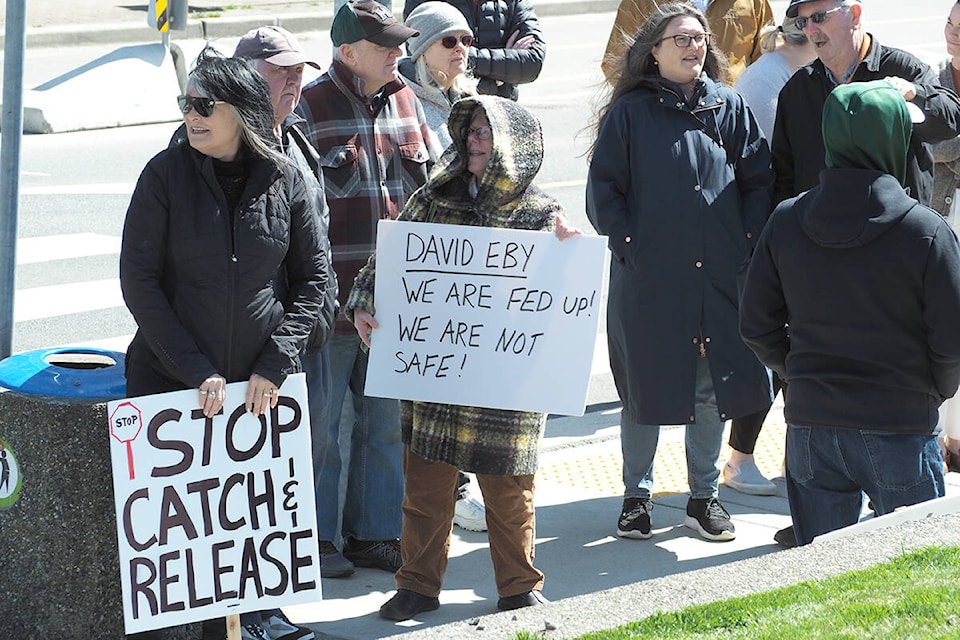BY ANNIE THUVESON
Let’s keep Nanaimo on the provincial map amidst a variety of overlapping crises in our city: mental health and addictions, homelessness and poverty, crime and an ineffective justice system.
Previous rallies provided the impetus for Premier David Eby’s recent visit to Nanaimo. He heard us, but needs to keep hearing us.
I am a retired correctional officer and probation officer of 30 years. In 1982 we served under the Juvenile Delinquents Act which was superseded by the Young Offenders Act in 1984. The YOA, in my opinion, worked well. In 2003, the Youth Criminal Just Act superseded the YOA. It included youth justice conferencing, based on the principles of restorative justice, which was a bonus, but it became increasingly difficult to incarcerate youths committing significant crimes.
By the time a youth hits the justice system, every intervention opportunity has either been exhausted or rejected.
Some would say youths don’t belong in jail. In custody centres, however, health care is provided including dentistry. Programs are offered. Youths can learn they are artists, athletes and capable of learning skills such as woodworking. They can access a GED program. I am not implying that every youth does well in custody, but in fact, many do.
How did we get to where we are today? I reflect back to 2003 when Canadian youth incarceration rates were being compared to the high incarceration rates in the U.S. I learned that B.C. had significantly lower counts than Ontario and the Prairie provinces. By introducing the Youth Criminal Justice Act, the federal government saved face, but in my opinion, cost B.C. our ability to properly help youths who for the most part had endured significant trauma throughout their young lives. The recidivism rate for youths entering the adult system at the time was 33 per cent. We were not warehousing youths, as some accuse. Crime-involved youths who do not experience consequences are regularly ‘recruited’ into significant street crime. Twenty years later, we see the outcome of just one bad decision made 20 years ago.
It is noteworthy that youth custody centres were at a fraction of their capacity between 2019-2022. Concurrently, youths and adults needed treatment beds. Apart from blatant misspending and poor management, it was a missed opportunity for mental health and the justice system to combine efforts, modify policy, and provide needed services. Moving forward, I would suggest that institutional settings become therapeutic settings.
We talk about revolving-door criminals. We rarely talk about revolving-door ministers ill-equipped to manage portfolios outside of their experience. I watched this happen throughout my career. Too many forgetting that we are in the business of public service, not self-promotion.
It is often said that the antidote to addiction is connection. We might also say that the antidote to the chaos in our province is a fully functioning justice system and a fully functioning health-care system that work together to stabilize communities.
Please attend Nanaimo’s Enough is Enough rally on April 27 at noon at Diana Krall Plaza. Nanaimo will be joined by several cities around B.C. saying enough is enough.
Annie Thuveson is a retired correctional officer and probation officer.
READ ALSO: B.C. government setting up 12 ‘hubs’ dedicated to targeting repeat violent offenders
editor@nanaimobulletin.com
Like us on Facebook and follow us on Twitter
